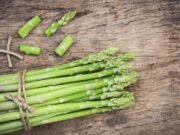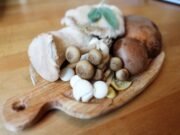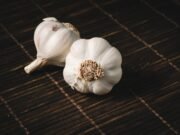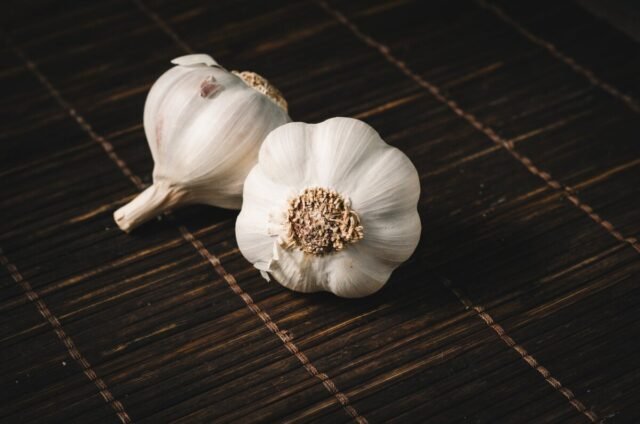Garlic, a versatile and flavorful bulb, is a staple ingredient in many cuisines worldwide. Whether you're a seasoned gardener or just starting, growing your own garlic is a rewarding experience that offers fresh, organic produce right from your backyard. This comprehensive guide will take you through the essential steps of garlic cultivation, from selecting the right variety to harvesting and storing your bountiful crop.
Choosing the Right Garlic Variety
The first step in garlic cultivation is selecting the most suitable variety for your growing conditions and personal preferences. Garlic varieties are broadly classified into three main types: hardneck, softneck, and elephant garlic.
1. Hardneck Garlic:
-
Characteristics:
- Produces a stiff central stalk (scape) that curls and forms bulbils (small cloves) at the top.
- Known for its intense flavor and long storage life.
- Typically planted in the fall and harvested in the early summer.
-
Flavor Profile:
- Bold, pungent, and slightly spicy.
- Ideal for roasting, sautéing, and adding to sauces and marinades.
2. Softneck Garlic:
-
Characteristics:
- Lacks a central stalk and produces larger, more uniform cloves.
- Generally milder in flavor compared to hardneck varieties.
- Stores well for several months.
- Typically planted in the spring and harvested in the late summer.
-
Flavor Profile:
- Mild, mellow, and slightly sweet.
- Versatile for use in a wide range of dishes, from stir-fries to soups and stews.
3. Elephant Garlic:
-
Characteristics:
- Produces massive bulbs with large, mild-flavored cloves.
- Not a true garlic variety but a member of the leek family.
- Typically planted in the fall and harvested in the early summer.
-
Flavor Profile:
- Mild, sweet, and slightly garlicky.
- Often used in Asian cuisine and as a roasted vegetable.
Preparing the Soil and Planting Garlic:
-
Soil Preparation:
- Choose a well-drained, fertile soil with a pH range of 6.0 to 7.0.
- Incorporate organic matter, such as compost or well-rotted manure, to improve soil structure and fertility.
- Ensure the soil is free of weeds and large stones.
-
Planting Garlic:
- Break the garlic bulb into individual cloves, leaving the papery skin intact.
- Plant the cloves pointy side up, 2-3 inches deep and 4-6 inches apart.
- Cover the cloves with soil and water thoroughly.
- Apply a layer of mulch to conserve moisture and suppress weeds.
Garlic Care and Maintenance:
-
Watering:
- Water regularly to keep the soil consistently moist but not waterlogged.
- Avoid overhead watering to prevent fungal diseases.
-
Weeding:
- Regularly weed the garlic bed to prevent competition for nutrients and moisture.
-
Mulching:
- Apply a layer of organic mulch, such as straw or compost, around the garlic plants to retain moisture, suppress weeds, and regulate soil temperature.
Harvesting and Storing Garlic:
-
Harvesting:
- Hardneck garlic: Typically ready for harvest in early summer when the leaves start to turn brown and the scapes begin to curl.
- Softneck garlic: Usually harvested in late summer when the leaves have completely died back.
-
Curing:
- After harvesting, allow the garlic bulbs to cure in a warm, dry, and well-ventilated area for 2-3 weeks.
- This process helps the bulbs develop their full flavor and extend their storage life.
-
Storing:
- Store cured garlic in a cool, dark, and dry place, such as a pantry or cellar.
- Properly stored garlic can last for several months.
Garlic Care and Maintenance: Nurturing Your Garlic Crop
1. Watering:
-
Importance:
- Garlic requires consistent moisture for optimal growth and bulb development.
- Inadequate watering can lead to stunted growth, poor bulb formation, and increased susceptibility to pests and diseases.
-
Watering Schedule:
- Water regularly, providing approximately 1 inch of water per week.
- Adjust the watering frequency based on weather conditions and soil moisture levels.
- Avoid overhead watering to prevent fungal diseases.
2. Weeding:
-
Importance:
- Weeds compete with garlic plants for nutrients, moisture, and sunlight.
- Regular weeding helps maintain a healthy growing environment and promotes vigorous garlic growth.
-
Weeding Methods:
- Hand weeding: Manually remove weeds by pulling them out or using a hoe.
- Mulching: Apply a layer of organic mulch around the garlic plants to suppress weed growth.
- Use of herbicides: Consider using selective herbicides specifically designed for garlic cultivation, if necessary.
3. Mulching:
-
Importance:
- Mulching provides numerous benefits for garlic cultivation:
- Conserves soil moisture, reducing the need for frequent watering.
- Suppresses weed growth, eliminating the need for excessive weeding.
- Regulates soil temperature, preventing extreme fluctuations that can stress the plants.
- Improves soil structure and fertility over time.
- Mulching provides numerous benefits for garlic cultivation:
-
Mulch Materials:
- Straw: A widely used and effective mulching material for garlic.
- Compost: Provides additional nutrients to the soil while suppressing weeds and conserving moisture.
- Wood chips: Can be used as mulch, but ensure they are well-aged to avoid nitrogen depletion in the soil.
Harvesting and Storing Garlic: Preserving Your Bountiful Crop
1. Harvesting:
-
Hardneck Garlic:
- Typically ready for harvest in early summer when the leaves start to turn brown and the scapes begin to curl.
- Gently lift the bulbs from the soil using a garden fork or spade.
-
Softneck Garlic:
- Usually harvested in late summer when the leaves have completely died back.
- Allow the bulbs to dry in the field for a few days before lifting them from the soil.
2. Curing:
- Importance:
- Curing is a crucial step that helps the garlic bulbs develop their full flavor and extend their storage life.
- Hang the garlic bulbs in a warm, dry, and well-ventilated area for 2-3 weeks.
3. Storing:
-
Ideal Conditions:
- Store cured garlic in a cool, dark, and dry place, such as a pantry or cellar.
- Maintain a temperature range of 32-40°F (0-4°C) and a relative humidity of 60-70%.
-
Storage Methods:
- Braided garlic: Braid the garlic bulbs together using their stems and hang them in a cool, dry place.
- Mesh bags: Store garlic bulbs in mesh bags to allow for air circulation and prevent spoilage.
- Airtight containers: Place garlic bulbs in airtight containers and store them in a cool, dark place.
By following these comprehensive care and maintenance practices, you can ensure a bountiful harvest of flavorful garlic. Proper harvesting and storage techniques will extend the shelf life of your garlic, allowing you to enjoy its culinary delights throughout the year.































